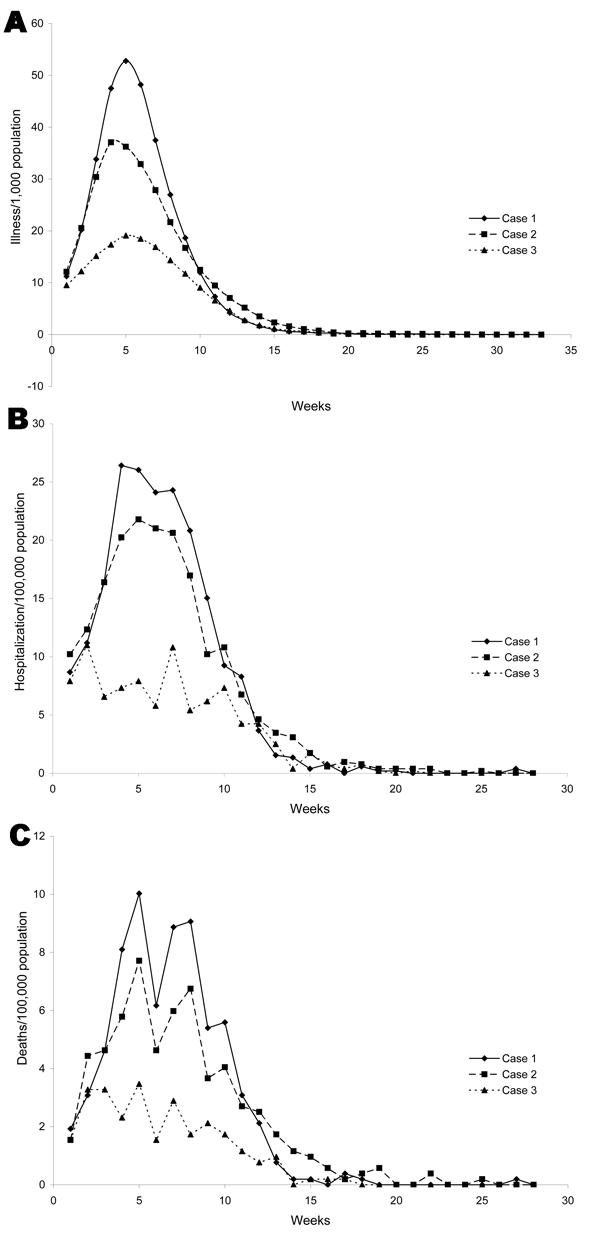Volume 13, Number 4—April 2007
Research
Effectiveness of Interventions to Reduce Contact Rates during a Simulated Influenza Pandemic
Figure 3

Figure 3. . Dynamics of the influenza pandemic. Case 1: no interventions. Case 2: schools are closed for 14 days when prevalence reaches 10%. Case 3: ill persons and all their household contacts are confined to their homes after the second day of illness of the index case-patient, and the compliance rate is 40%. A) illness; B) hospitalizations; C) deaths.
Page created: June 20, 2012
Page updated: June 20, 2012
Page reviewed: June 20, 2012
The conclusions, findings, and opinions expressed by authors contributing to this journal do not necessarily reflect the official position of the U.S. Department of Health and Human Services, the Public Health Service, the Centers for Disease Control and Prevention, or the authors' affiliated institutions. Use of trade names is for identification only and does not imply endorsement by any of the groups named above.